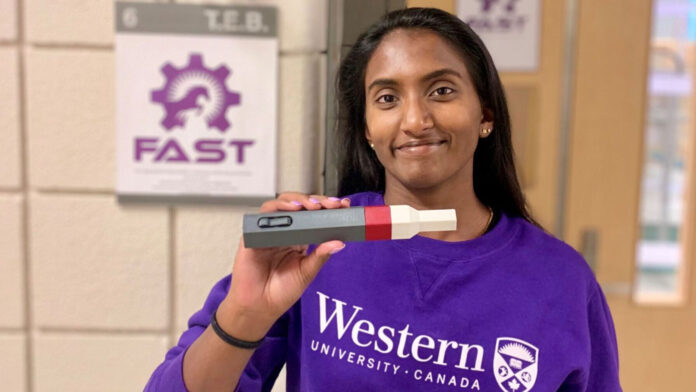It can be nerve wracking to have to give yourself an injection, but some patients managing chronic conditions need to do it regularly.
Autoinjectors make that task much easier, helping people stay on track with the medications they need. Most people are more comfortable using one over a syringe, and they reliably deliver a full dose. Autoinjectors are also especially popular for pediatric patients or in emergency applications like an EpiPen for severe allergic reactions.
But the added cost over a simple syringe puts them out of reach for millions of patients who can’t afford them.
Autoinjectors on the market today have complicated mechanical designs, most of which are protected by patents. That combination drives up cost for patients.
To improve access, researchers at Western University designed a 3D-printable and open-source autoinjector that can be assembled for under $7 CAD — a tenth of the cost of a commercially available model. Their study, led by engineering and business school professor Joshua Pearce, was published in PLOS One.
The design includes seven 3D-printed pieces and two compression springs to drive the injection via a standard insulin syringe housed inside the barrel. Many of today’s commercial autoinjectors use multiple springs of varying dimensions and stiffness, driving up the cost and complexity. By streamlining the design to reduce the number of springs, the cost of the open-source autoinjector stays low.
The team used current ISO standards for needle-based injection systems to define the requirements for their design. They used ethyl alcohol as a test liquid, chosen to mimic the viscosity of an insulin solution, and they weighed their device before and after being deployed to measure the amount dispensed.
They found that the full dose was dispensed 98 percent of the time for both 0.5 mL and 1.0 mL insulin syringes.
By releasing the design files and assembly instructions under and open-source license, the authors hope that their design will be picked up by companies for low-cost manufacturing and improve global access. Any companies that take up this challenge would need to gain regulatory approval to show that their product is safe for use before the autoinjectors could be sold.
Although the device still needs to be tested on people to make sure it’s safe, the open-source nature of the design means that anyone is free to use it as a springboard for further innovation and improvement to help it get to that stage.
Better access to autoinjectors will have an important impact on low-resource and rural areas where trained healthcare personnel aren’t always available to help give injections. Most patients also prefer the convenience and flexibility of being able to manage their chronic conditions independently, and this makes them more likely to take their medications on schedule.
Affordable autoinjectors will empower patients to take charge of their own health. That independence will drive more equitable and accessible care for millions of patients around the world.








































